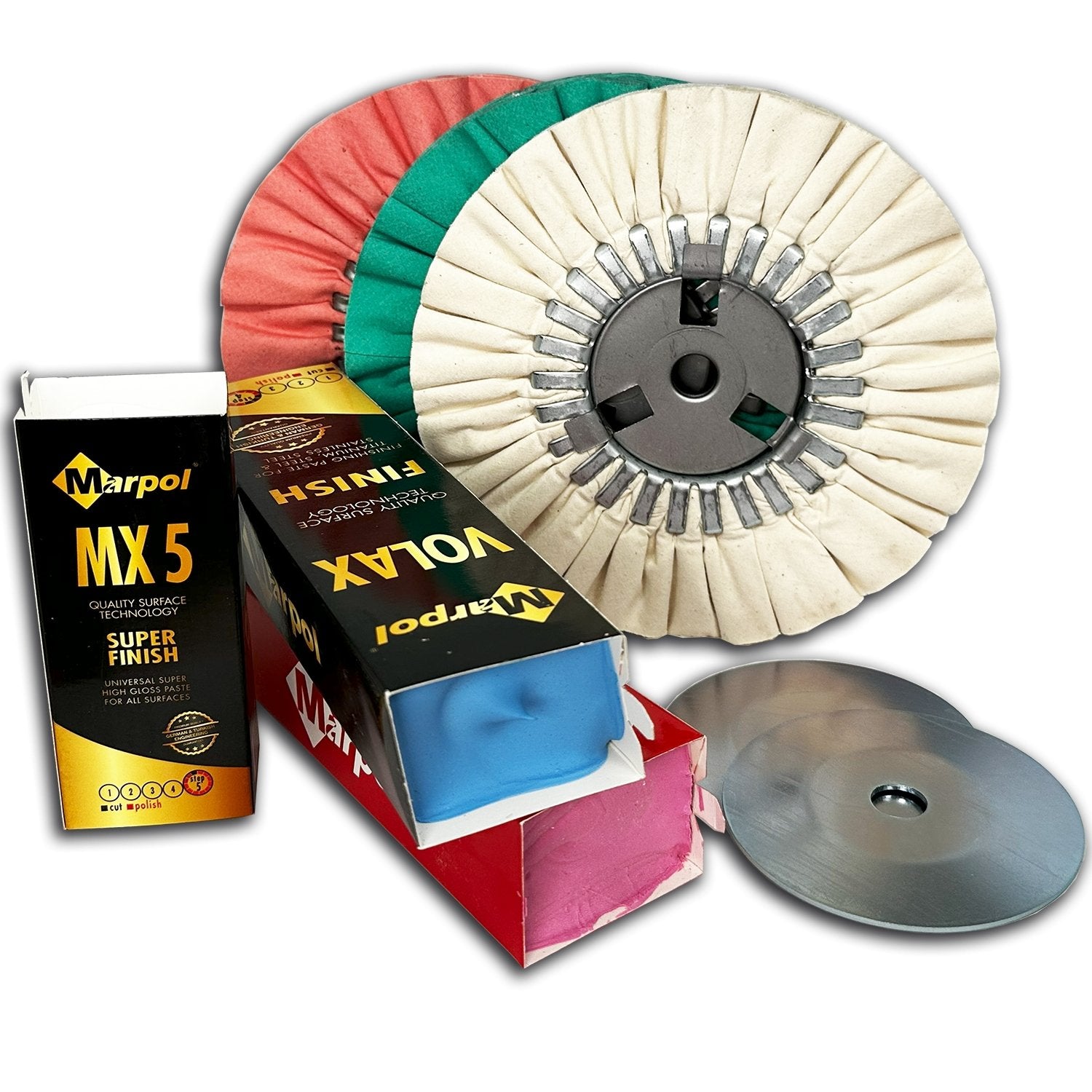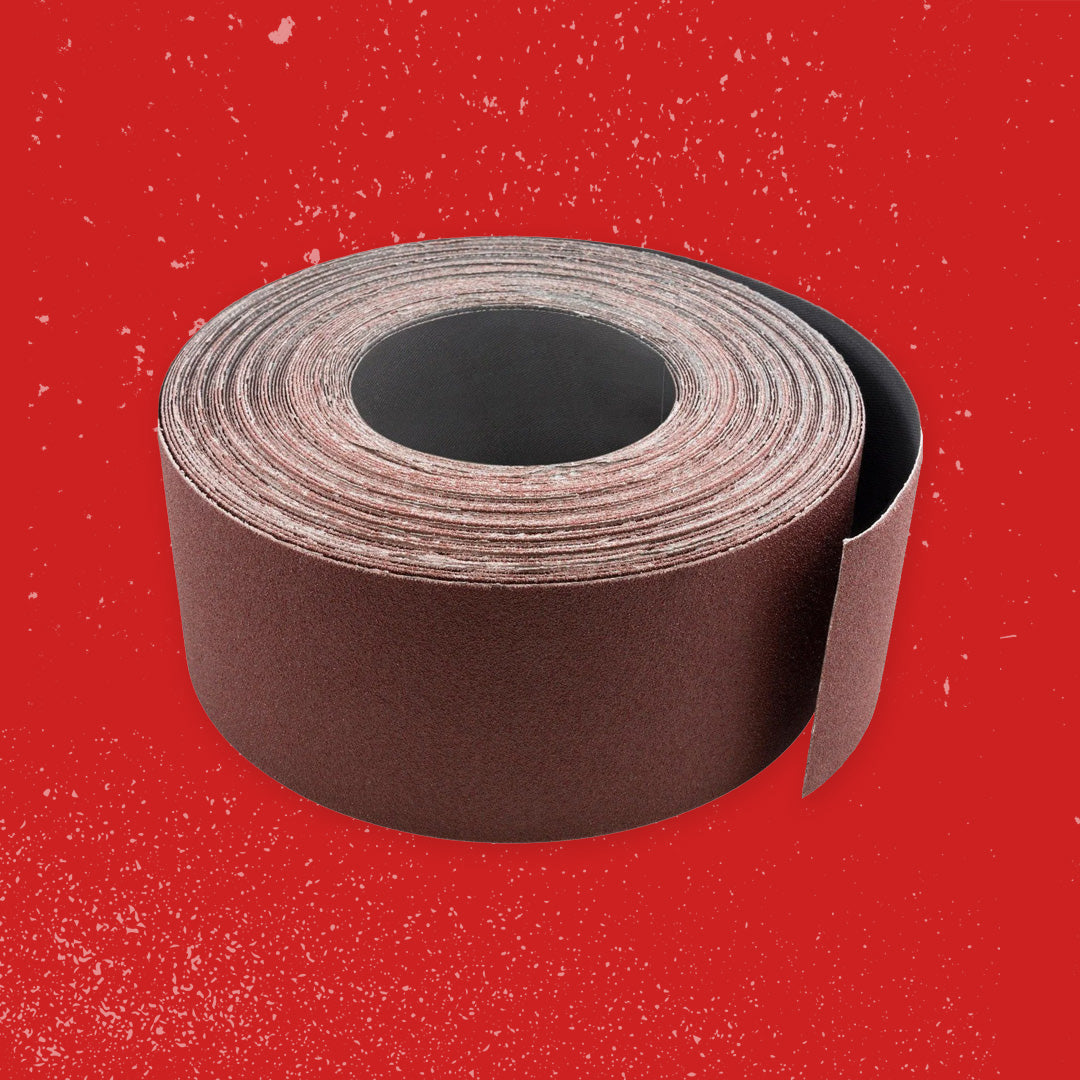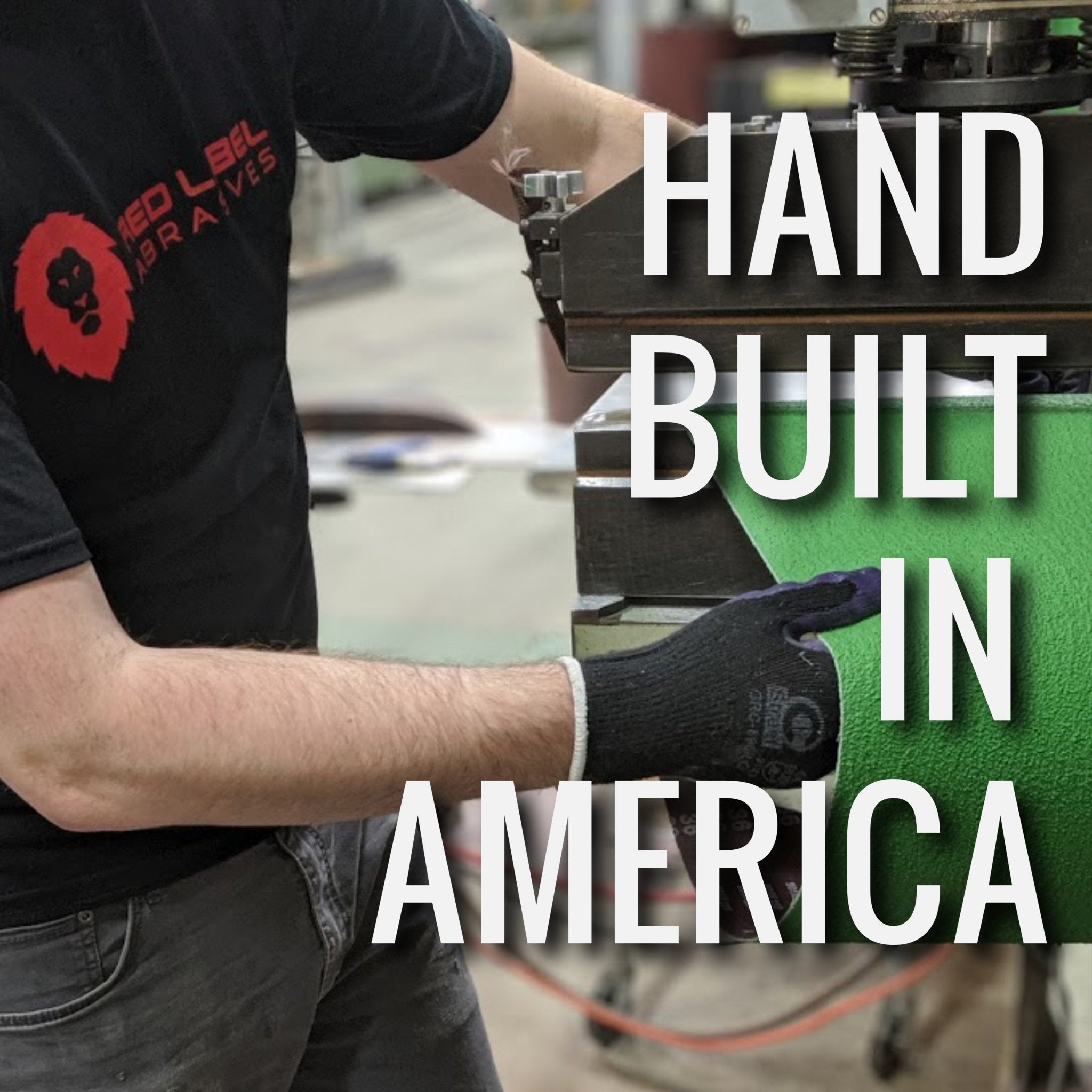Your Cart is Empty
Free Shipping over $150 (Excludes Oversized Products)
Free Shipping over $150 (Excludes Oversized Products)
Sanding Belts
Sanding Discs

What is the Optimal Speed for a Belt Grinder?
by David Kranker 3 min read

Quick Summary
The optimal speed for belt grinders is largely dependent on a number of factors, including type of abrasive grain, grit grade, workpiece material, and more. Generally speaking, a safe speed in most cases is 3,000 surface feet per minute. You can calculate surface feet per minute using the formula SFPM = RPM X .262 X Tool Diameter.
Topics Covered:
- What is Surface Feet Per Minute?
- Recommended Surface Speeds By Material
- Why SFPM is Important
- Contact an Abrasive Specialist
When using a belt grinder, running it at the right speed is as important as choosing the correct abrasive. Different workpiece materials need different speeds for ideal belt performance, stock removal rate, and productivity. In this blog, we’ll explain how to calculate the optimal cutting speed for a belt grinder, also known as its surface feet per minute (SFPM).
What is Surface Feet Per Minute?
SFPM refers to your belt grinder’s speed in linear feet per minute, or cutting speed. It indicates the relative velocity between the abrasive belt and the surface of the workpiece. The higher the speed of the belt, the higher the cut rate, as more cutting edges appear in the workpiece as the speed increases. With each application, the goal is to run the SFPM as high as possible to increase production while maintaining minimal heat generation.
Different materials run better at different SFPMs. The formula below can be used to calculate cutting speed for working on various types of workpieces.
SFPM = RPM X .262 X Tool Diameter
For example, if you have a 2 x 72 belt grinder with an 1800 RPM motor with a 4” drive wheel, the formula would look like this:
(1800 x .262) x 4” = 1886
Optimal belt speed can vary slightly depending on the type of abrasive grain and grit grade you’re using, but in general, this formula should get your operations near the ideal range for high cut rates.
Recommended Surface Speeds By Material
Like grain type and grit grade, the material you’re processing will also affect recommended surface speed. The greater the density of the material, the harder it will be and the higher the abrasive speed will generally need to be to be effective. Recommended surface speeds by material can be found in the table below.
|
Material to be Processed |
Surface Speed (Feet per Minute) |
|
Acrylics |
960 - 2700 |
|
Glass, Ceramics, & Stone |
1560 - 2700 |
|
Lacquers & Varnshies |
1560 - 2940 |
|
Hard & Hardened Steel |
1560 - 2940 |
|
Plastic & Rubber |
1920 - 3540 |
|
Titanium & Titanium Alloys |
1920 - 4920 |
|
Wood |
2940 - 4920 |
|
Aluminum & Zinc |
3540 - 5880 |
|
Stainless Steel, Tool Steel, & High Speed Steel |
3540 - 5880 |
|
Copper & Brass |
4920 - 6840 |
|
Cast Iron & Carbon Steel |
4920 - 8820 |
Why SFPM is Important
Sanding is an art of balance. Running your belt sander too fast can ruin the temper of metals. Higher speeds can also burn out the bearings on smaller contact wheels.
Speed becomes more important when you're finish grinding. You'll want to make sure you're running your grinder at a slow enough speed to be able to grind with precision.
If you are new to belt grinder use or have questions about the appropriate SFPM for a material you have never worked with, contact an experienced abrasives manufacturer for guidance. Although the formula for SFPM is generally valid, variables like the following also have an impact:
- The material you will be grinding
- The type of abrasive you are using (e.g. ceramic, zirconia, A/O)
- The grit of the sanding belt. Higher grits are recommended for polishing while lower grits are used to remove stock and provide more definition to the workpiece.
A reputable specialist can make an informed recommendation based on intended use and even provide you with the right abrasive for the job.
Contact an Abrasive Specialist
At Red Label Abrasives, we custom-manufacture premium quality sanding belts for various types of belt grinders and can provide you with information about how you can increase the working life of your machine/belts. Red Label Abrasives has been family-owned for over 35 years. We take great pride in offering exceptional customer service and unrivaled technical support. If you would like to place an order or you have more questions, please call 844-824-1956 or fill out a contact form. ABOUT THE AUTHOR
David Kranker is a writer and creative maker who has been covering the abrasive industry on the Red Label Abrasives Blog since 2020. David spends his time continually researching sanding techniques to provide readers with the latest and greatest information. In his free time, David utilizes abrasives for many different home and auto projects at his home in Delton, MI.
Our Most Popular Abrasives

EdgeCore Ceramic Sanding Belts

EdgeCore Ceramic Flap Discs

Buffing Kit
Shop By Product Category





Why Choose Red Label?







